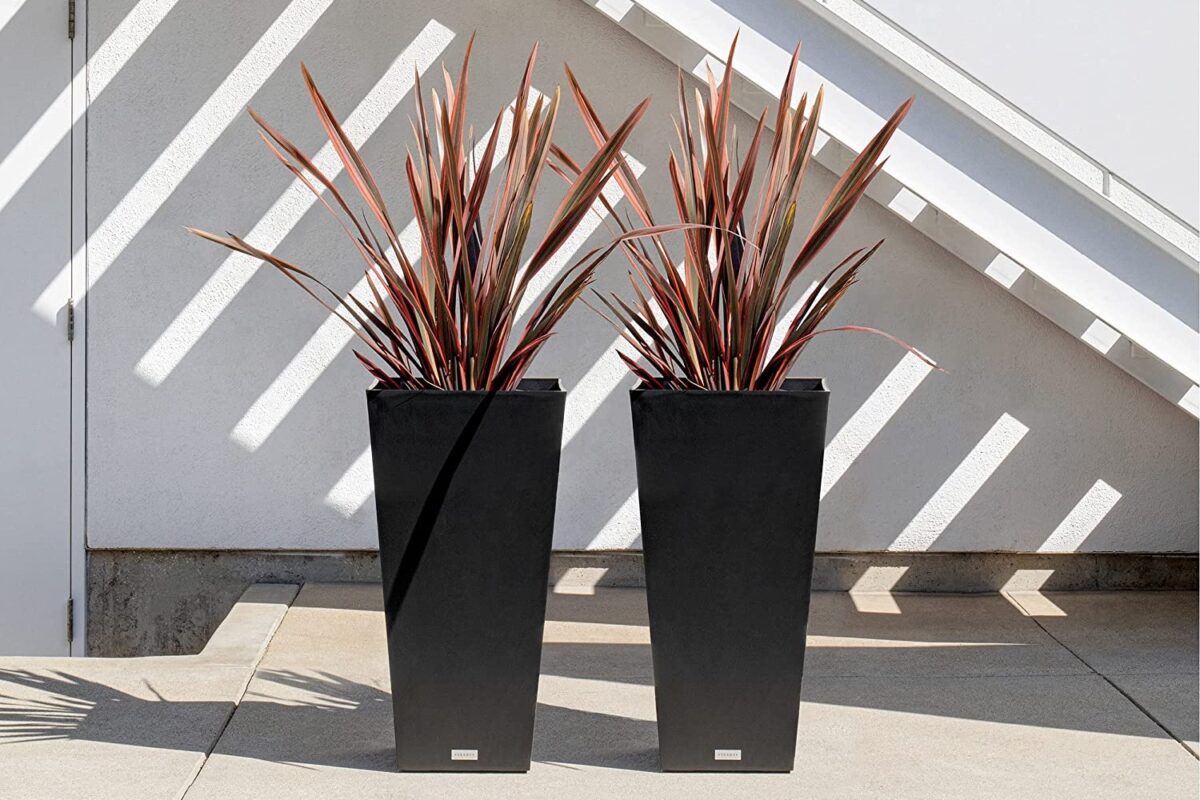
The Best Plant Pots
Pest Strategies
From indoor succulents to outdoor roses, finding the right pot for the plant species you’re growing is crucial to helping it stay healthy. To aid you in your search for the best plant pots, Pest Strategies researched different products on Amazon. You’ll find our top choices below.
https://www.amazon.com/dp/B077H5KVSJ
Veradek Plant Pots
What We Like: These pots are made from high-grade plastic with a scratch-resistant finish that’s rated for use in temperatures ranging from -30 to 125 degrees Fahrenheit. The removable shelf inserts also allow you to raise the bottoms to accommodate smaller plants.
https://www.amazon.com/dp/B07998PP1B
HBServices USA Plant Pot
What We Like: This six-inch round planter comes with a removable water tray that gives you two or more weeks of water. The tray sits on built-in risers to prevent circular stains on your floor or table. The planter has hollow legs that sit inside of the tray and soak up water or drain water as needed.
https://www.amazon.com/dp/B07N32JZRY
WallyGro Plant Pots
What We Like: These hanging planters hold wisteria, honeysuckle, and other plants that grow best along a support structure, such as a wall. They also work well if you’re strapped for space in your home or you want a natural form of wall decor. Additionally, the brackets allow you to easily remove the pots as needed to water or otherwise maintain your plants.
https://www.amazon.com/dp/B07X6NL9Q7
Sietpoek Plant Pots
What We Like: With different designs, you can plant identical plants in each of these pots and still be able to tell them apart. The ceramic material gives these planters a sturdy build, but because they’re relatively small in size, they’re easy to move from one room to another.
https://www.amazon.com/dp/B00VWU30EK
VIVOSUN Plant Pots
What We Like: From the sunroom to the front porch, these fabric pots can be moved around your home and yard with the attached carrying handles. Though they’re not overly stylish, they do provide a reliable and lasting way to grow large quantities of indoor and outdoor plants.
Buying Guide
From concrete pots that can withstand the elements to hanging planters that seamlessly blend in with your interior decor, plant pots vary greatly. Keep the below factors in mind when you’re looking through your online options.
- Size: We recommend choosing a plant pot that’s one or two inches larger than the size of your plant. Too small of a pot doesn’t give your plant room to grow, while too large of a pot may cause excess water to pool. If you anticipate your plant growing rapidly, consider using a small, disposable pot before moving it to a larger, permanent pot.
- Drainage: Built-in drainage holes at the bottom of a pot allow the soil to dry, preventing root rot. If your planter doesn’t have holes, create a drainage layer at the bottom of it with pebbles.
- Construction: While popular, clay and ceramic are prone to cracking, chipping, and breaking. Plastic and woven fabric plant pots are slightly more resilient, with metal pots being stronger than that. However, if you want ultimate protection for the elements, concrete plant pots are the way to go.
- Style: If aesthetics are a priority for you, choose a plant pot that’s both stylish and functional. Many planters are available in different colors and designs to complement any space.
FAQs
-
Will my plant pot come with a saucer?
Many planters come with saucers to catch excess water. If yours doesn’t, you can let it drain onto the ground if it’s outside or place it over a sink or tub for 10–15 minutes if it’s inside.
-
Will prolonged sun exposure damage my plant pot?
The exterior surface of your plant pot may fade over time, especially if it’s made with clay, ceramic, or terracotta. However, it will still function properly.
-
How do I avoid overwatering my plants?
Start by pouring a little water, because it’s easier to add water rather than attempt to drain and dry waterlogged roots and leaves. Consider a ceramic or clay pot if you tend to overwater plants, as these materials are more moisture-wicking than plastic, metal, or fabric.
Pest Strategies provides reviews of select products that are top-selling on Amazon and/or popular in consumer searches. Our team evaluates the products based on industry research, consumer reviews, pricing data, and other objective criteria. Unless otherwise noted, these product reviews are intended to help inform buying decisions for non-professionals. Because pest control products can be dangerous to your family if mishandled, we always recommend consulting with an exterminator, even if just to ask for advice on how to apply pest control products yourself.